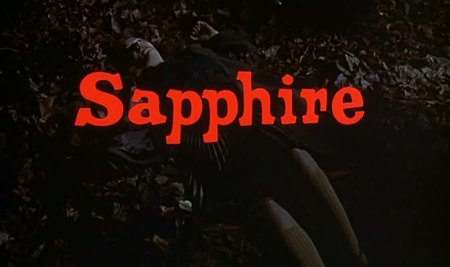
I haven’t been impressed by Basil Dearden’s comedies, though I like some of his dramas a lot. THE GREEN MAN seemed very disappointing for a black comedy with Alistair Sim, but admittedly Dearden was fired from that one so maybe it wasn’t his fault. His Benny Hill vehicle, WHO DONE IT? is really lame, but then Benny Hill didn’t have a star personality, was more a man of a thousand chubby faces, so he never made sense as a comic leading man.
And I’d heard that MAN IN THE MOON was REALLY bad, but of course that just made me curious. It’s co-written with Bryan Forbes, and another Dearden-Forbes collab, THE LEAGUE OF GENTLEMEN, is terrific, and very nearly a pure comedy itself. The star is Kenneth More, who can be effective in the right part — he certainly doesn’t ruin GENEVIEVE — so it seemed worth a go.

And yes, it’s curious… a strong supporting cast includes Shirley Anne Field, who keeps taking her clothes off, and does a great comedy voice; Michael Hordern; Norman Bird, John Glyn-Jones. Charles Gray plays an astronaut, and gets all the most eye-popping scenes.
I do tend to find More fairly charmless, and in this respect he’s quite well cast here, playing a saloon-bar bore who makes an easy living as a guinea pig in studies of the common cold: he seems to be immune, and puts his astonishing health down to a carefree attitude. This unusual profession allows us to meet him dozing in a bed in the middle of a field (part of an experiment) and the scene gets more dreamlike when Field crosses the field in full evening dress. Throughout this somewhat unsatisfactory film, we do get arresting images like this.

The story goes thus: bluff, hearty chump More is recruited by the British space program, NARSTI, to serve as a disposable space guinea pig, fired secretly at the moon to establish whether the going is safe for the specially trained, celebrated super-astronauts, led by Charles Gray (quite funny casting, this). The weirdest moment is when ground control use an isolation tank to brainwash Gray, who has become very hostile to More, resenting the fact that the untrained lout is going to be first on Luna. The brainwashing is a roaring success and Blofeld Gray emerges from the tank aglow with adoration for the baffled More. Well, first he seems sinister and inhuman, a clockwork orange, then he’s hyperanimated and childish with his schoolboy crush.
Dearden and Forbes seem to accept that the men from NARSTI — it’s not clear if they’re a state operation of a commercial one — are horrible, ruthless and would brainwash without a second thought, but they don’t seem to want to make a big satirical point of it — which marks them out as cynical but conservative, a bit like the Boultings.


At first, the casting of Gray as a hearty, athletic astronaut seems to make little sense, but in fact they know what they’re doing…
Unusually for a comedy, the tech and science approximate the real thing. Depressing that British cinema could only conceive of this subject in either farcical or monster-movie terms. This one would double-feature nicely with THE FIRST MAN INTO SPACE. But at least that cheesy B-movie seems to be sincere about something or other — the existential horror of man’s aloneness in the universe, I think. Death and decay. MAN IN THE MOON needs to find something to be serious about, to be an effective comedy.
Also, there are shots in it so nice, in a dramatic, pulp sci-fi way, that it makes you wish they’d made a wholly unironic film of Dan Dare, Pilot of the Future.



“Doctor? I’ve been searching for you… Everything seems strange and dark… I couldn’t find you! … Under this stuff, I feel like I’m suffering from some terrible disease… like I got no blood in my veins… I have no memory… Only an instinct to stay alive…until I found you… I’ve been groping my way through a maze of fear and doubt…”
The title, alas, is a cheat — More is blasted to Australia, not the moon, a fact he only realises when he encounters a tin of Heinz beans and a kangaroo.











